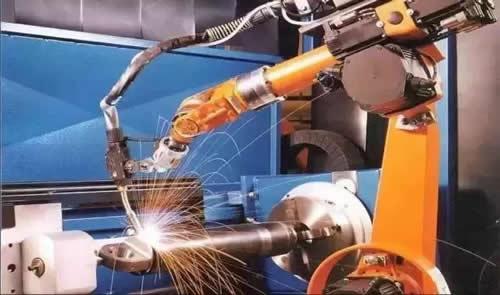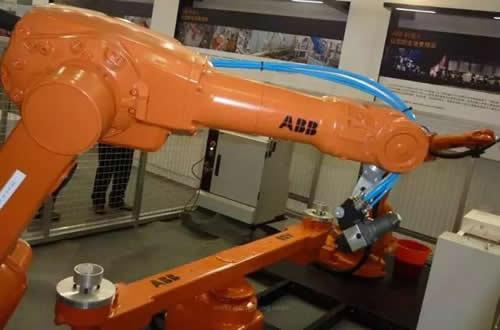The research of modern robots began in the middle of the 20th century. Its technical background is the development of computer and automation, as well as the development and utilization of atomic energy. Since the first digital electronic computer was introduced in 1946, the computer has made amazing progress, moving toward high speed, large capacity, and low price. The urgent need for mass production has driven the advancement of automation technology. One of the results was the birth of CNC machine tools in 1952. The research on control and mechanical parts related to CNC machine tools has laid the foundation for the development of robots.
On the other hand, the harsh environment of the Atomic Energy Laboratory requires certain operating machinery to replace humans with radioactive materials. In the context of this demand, the Argonne Institute of the American Atomic Energy Commission developed a remote-controlled robot in 1947, and in 1948 developed a mechanical master-slave manipulator.
Industrial robot development in the United StatesThe United States is the birthplace of robots. As early as 1962, the world's first industrial robot was developed. It is at least five or six years before the start of Japan, which is known as the robot kingdom. After more than 40 years of development, the United States has become one of the world's strong robots with a solid foundation and advanced technology. Looking at its history of development. The road is tortuous and uneven.

During the 1960s and 1970s, industrial robots in the United States were mainly based on the research stage, but only a few universities and a few companies carried out related research work. At that time, the US government did not include industrial robots in key development projects. In particular, the unemployment rate in the United States was as high as 6.65%. The government worried that the development of robots would cause more people to lose their jobs. Therefore, neither financial support nor robot development was organized. . In the late 1970s, although the US government and the business community changed their understanding of the manufacture and application of industrial robots, they still focused on the research of robot software and advanced robots in special fields such as military, space, ocean, and nuclear engineering. In terms of development, Japan's industrial robots came to the fore, and soon surpassed the United States in the application of industrial production and robot manufacturing, and the products formed a strong competitiveness in the international market.
According to the United Nations Economic Commission for Europe (UNECE) and the International Federation of Robotics (IFR), by the end of 2003, the total number of robots operating in the United States was 112,400, an increase of 7% over 2002. It is estimated that by the end of 2007, the number of robots running will reach 145,000. Statistics on the number of industrial robots per 10,000 employees. By the end of 2003, there were 63 industrial robots per 10,000 employees in the US manufacturing industry. Although the United States has entered the top ten in the world in terms of rankings, it still has a big gap with the previous few, which is only 43% of Germany, 54% of Italy and 68% of the EU. Compared with ordinary manufacturing, the number of industrial robots per 10,000 industrial workers in the US auto industry has increased significantly, reaching 740, but still far lower than Japan (1400 robots), Italy (1400 robots) and Germany. (1000 robots).
Industrial robot development in JapanIn 1965, MIT's Roborts demonstrated the first robotic system with visual sensors that recognize and locate simple building blocks. In 1967, Japan established the Artificial Hand Research Association (now renamed the Bionics Research Association), and in the same year held the first Japanese Robotics Conference. In 1970, the first International Conference on Industrial Robotics was held in the United States. After 1970, the research of robots was rapidly and widely spread. In 1973, Richard Howe of Cincinnati Milacron created the first industrial robot controlled by a small computer that was hydraulically driven and capable of lifting payloads up to 45 kg.

In 1980, industrial robots were really popular in Japan, so the year was called "the first year of robots." Subsequently, industrial robots have been greatly developed in Japan, and Japan has thus won the "beauty of the robot kingdom."
At the same time, Japan in the 1970s was facing a serious labor shortage, a problem that has become a major constraint to its economic development. There is no doubt that industrial robots that were born in the United States and put into production have brought good news to Japan. In 1967, Kawasaki Heavy Industries of Japan first introduced robots and technology from the United States, established a production plant, and in 1968, produced the first Japanese-made unimate robot. After a brief cradle, Japanese industrial robots quickly entered the practical stage and gradually expanded from the automotive industry to other manufacturing and non-manufacturing industries.
In 1980, it was called Japan's "first year of robot popularization", and Japan began to promote the use of robots in various fields, which greatly eased the social contradiction of a serious shortage of labor in the market. Coupled with the multi-faceted encouragement policies adopted by the Japanese government, these robots have been welcomed by the majority of enterprises. From 1980 to 1990, Japan’s industrial robots were in their heyday. Later, the international market once turned to Europe and North America, but Japan resumed its former glory after a brief downturn. At the end of 1993, there were 610,000 industrial robots installed worldwide, of which 60% were in Japan, 8% in the United States, 17% in Europe, and 12% in Russia and Eastern Europe.
Industrial robot development in GermanyThe number of industrial robots in Germany ranks third in the world, second only to Japan and the United States, and its research and application of intelligent robots is in the leading position in the world. At present, on the basis of popularizing the first generation of industrial robots, the second generation of industrial robots has been promoted and applied to become mainstream installation models, and the third generation of intelligent robots has occupied a certain proportion and has become the development direction. The world's robot suppliers are divided into Japanese and European.
Sweden's ABB is one of the world's largest robot manufacturing companies. In 1974, the world's first fully electronically controlled industrial robot IRB6 was developed, which was mainly used for workpiece pick-and-place and material handling. The first welding robot was produced in 1975. After the acquisition of the Trallfa painting robot company in 1980, its robot products have become more complete. Industrial robots manufactured by ABB are widely used in welding, assembly casting, seal coating, material handling, packaging, painting, water cutting and other fields.
KUKA Roboter Gmbh in Germany is one of the top manufacturers of industrial robots in the world.

In 1973, KUKA's first industrial robot was developed. The annual output reaches about 10,000 units. The robots are widely used in the fields of instruments, automobiles, aerospace, food, pharmaceuticals, medicine, foundry, plastics, etc., mainly used in materials processing, machine tool equipment, packaging, stacking, welding, surface rest and other fields.
The development of industrial robots in ChinaChina's industrial robots started in the early 1970s, and their development process can be roughly divided into three stages: the germination period of the 1970s; the development period of the 1980s; and the practical period of the 1990s. Now, after more than 20 years of development, it has begun to take shape.
China has produced some key components of robots and developed industrial robots such as arc welding, spot welding, palletizing, assembly, handling, injection molding, stamping and painting. A number of domestic industrial robots have served on the production lines of many domestic enterprises; a group of research talents in robotics have also emerged. Some relevant scientific research institutions and enterprises have mastered the optimization design and manufacturing technology of industrial robot manipulators; industrial robot control, hardware design technology of drive system; robot software design and programming technology; kinematics and trajectory planning technology; arc welding, spot welding And the development and preparation technology of large robot automatic production lines and peripheral equipment. Some key technologies have reached or are close to the world level.
Pvc Trunking,Pvc Cable Trunking,Plastic Cable Trunking,Pvc Electrical Trunking
FOSHAN SHUNDE LANGLI HARDWARE ELECTRICAL CO.LTD , https://www.langliplastic.com
